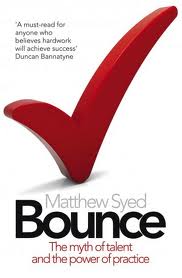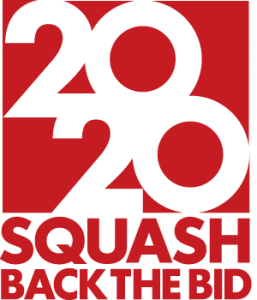 If you’ve ever wondered how really great athletes perform their magic, it’s because they have acquired a wide range of skills and abilities that are now part of their IMPLICIT Mental System. Matthew Syed explains in it outstanding detail with amazing clarity in his bestselling book “Bounce“.
If you’ve ever wondered how really great athletes perform their magic, it’s because they have acquired a wide range of skills and abilities that are now part of their IMPLICIT Mental System. Matthew Syed explains in it outstanding detail with amazing clarity in his bestselling book “Bounce“.
Rather than try to summarise Syed’s explanation, I thought I would share with you a real case study from Sydney Tennis Coach, Alison Scott.
Hi Marc,
Today I was teaching a 12 yr old girl the forehand. She had come to get some lessons after having a break from playing for a couple of years and wanted to get back into it again. She was a medium beginner – where she had 2 years of lessons before she stopped playing.
15 minutes into the tennis lesson I noticed a pattern where she would miss hit balls that she had to run out wide to hit.
I was aware she looked awkward and not feeling natural moving out to her right. I stopped and asked her to come to the net.
I asked her what she was focusing on when she was running wide for the forehand. She thought about it and then said she was focusing on her feet/footwork.
I suggested that we work on tracking the ball visually and working on her timing. I explained in more detail the exercise and we continued.
After another 15 minutes she was hitting the ball cleanly and was more balanced. She came to the net smiling and said it felt so easy and she felt more control with the ball. I explained a couple of things, one was getting her to understand that movement is as natural as walking down the street or around the house. You don’t think about it [because it’s in your IMPLICIT Mental System]. By putting her attention on the ball as the main focus made everything else fall into place naturally.
When she put her attention back on the ball and followed it from the bounce up to her racket she was able to apply her intelligence to that taks and consequently it improved. [This is the EXPLICIT Mental System at work, learning and applying new knowledge, skills and abilities with concentration and deliberate effort.]
I often see tennis players who are distracted away from the cause of the problem by looking at the effect instead. This often becomes bigger and harder to fix the more attention they put on it. [Matthew Syed explains this as the primary source of choking.]
It’s important to realise where you’re getting distracted or diverted and then get back on track quickly. Having a good tennis coach is a must to help you overcome the obstacles that prevent you from becoming a much better tennis player – usually with a lot less effort, stress and anxiety.
Kind regards,
Alison Scott
Modern Tennis Australia Pty Ltd





That is a great example of cause and effect. By focussing on a negative outcome it is hard to address the underlying cause.
We see a similar thing in Research & Development projects. They are not always successful and many companies focus on some specific part of the process instead of the overall outcome. THere are some distinct strategies they could apply when Improving Product Development if they started looking at the whole thing and not just the bit they are worrying over at the moment.
Great post.
Ray Keefe
Successful Endeavours Pty Ltd
Casey Business of the Year 2010
Industrial Electronics Future Award Winner 2011
Award Winning Electronics Design and Embedded Software Development
It would be interesting to consider this approach during a meeting such as a sales meeting. As a business person who meets with many prospective customers, I wonder what I am focussing on that may be hindering achieving the best result.